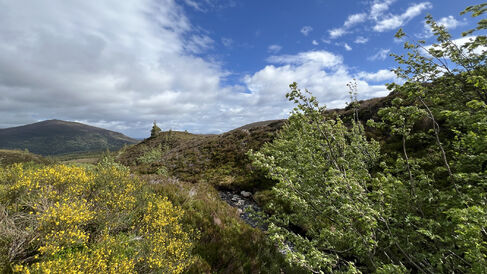
Photo from June 2025: Landscape in the Cairngorms, captured during Work Package 4 fieldwork on community-based landscape regeneration with Jennifer Gabrys and David Brown.
In the face of growing environmental challenges, many efforts to restore landscapes and ecosystems have overlooked a crucial factor: people.
At the Centre for Landscape Regeneration, Professor Jennifer Gabrys and Dr David Brown from the Department of Sociology, University of Cambridge, have been exploring how communities across the world are involved in, manage, and lead landscape regeneration projects.
In their latest research, published in Ambio (“Community-led landscape regeneration: A review of and framework for engagement in restoration initiatives”), they ask how future landscape regeneration can be more fair, democratic, and socially just while still achieving ecological goals.
Although calls for people-centred and equitable approaches are growing, the exact ways communities engage in regeneration—and what enables or limits their participation—remain poorly understood. Too often, top-down approaches dominate, sidelining local knowledge, needs, and values.
What the research does
Brown and Gabrys undertook a systematic review of international community-based landscape regeneration initiatives. They identified four key areas that shape how communities participate in restoration initiatives:
- Community organisation – How groups come together and structure themselves to influence and lead regeneration.
- Land ownership – How ownership patterns shape land access, decision-making, and agency.
- Engagement – The processes through which communities are involved in regeneration planning and action.
- Land values – How social, cultural, and ecological values inform regeneration priorities.
From this analysis, the authors propose a framework for analysing community-based landscape regeneration, designed to help guide future initiatives toward more inclusive and people-centred practices, whilst ensuring regeneration and restoration ambitions.
Why it matters
By understanding how communities engage with restoration practices, regeneration efforts can become more democratic, socially just, and effective. This review paper offers practitioners, policymakers, and communities themselves a roadmap for regenerating landscapes in ways that reflect local priorities, knowledge, and rights. In doing so, it pushes the conversation about ecological restoration beyond ecosystems alone—toward regeneration that is truly co-created with people.
